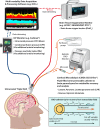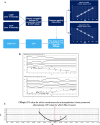Recent advances in traumatic brain injury
- PMID: 31563989
- PMCID: PMC6803592
- DOI: 10.1007/s00415-019-09541-4
Recent advances in traumatic brain injury
Abstract
Traumatic brain injury (TBI) is the most common cause of death and disability in those aged under 40 years in the UK. Higher rates of morbidity and mortality are seen in low-income and middle-income countries making it a global health challenge. There has been a secular trend towards reduced incidence of severe TBI in the first world, driven by public health interventions such as seatbelt legislation, helmet use, and workplace health and safety regulations. This has paralleled improved outcomes following TBI delivered in a large part by the widespread establishment of specialised neurointensive care. This update will focus on three key areas of advances in TBI management and research in moderate and severe TBI: refining neurointensive care protocolized therapies, the recent evidence base for decompressive craniectomy and novel pharmacological therapies. In each section, we review the developing evidence base as well as exploring future trajectories of TBI research.
Keywords: Critical care; Monitoring; Neuroprotection; Neurosurgery; TBI; Therapy; Traumatic brain injury.
Conflict of interest statement
The authors have no conflicts of interest relating to this manuscript to declare.
Figures





References
-
- Timofeev I, Santarius T, Kolias AG, Hutchinson PJA. Decompressive craniectomy—operative technique and perioperative care. Advances and technical standards in neurosurgery. New York: Springer; 2012. pp. 115–136. - PubMed
-
- Faul M, Wald MM, Xu L, Coronado VG (2010) Traumatic brain injury in the United States; emergency department visits, hospitalizations, and deaths, 2002–2006
-
- Maas AIR, Menon DK, Adelson PD, Andelic N, Bell MJ, Belli A, et al. Traumatic brain injury: integrated approaches to improve prevention, clinical care, and research. Lancet Neurol. 2017;16(12):987–1048. - PubMed
-
- Excellence NIfHCaC (2017) Head injury: assessment and early management—clinical guideline [CG176] 2017. https://www.nice.org.uk/guidance/cg176. Accessed 1 July 2019
-
- Huber A, Dorn A, Witzmann A, Cervós-Navarro J. Microthrombi formation after severe head trauma. Int J Leg Med. 1993;106(3):152–155. - PubMed
Publication types
MeSH terms
Grants and funding
LinkOut - more resources
Full Text Sources
Other Literature Sources
Medical

